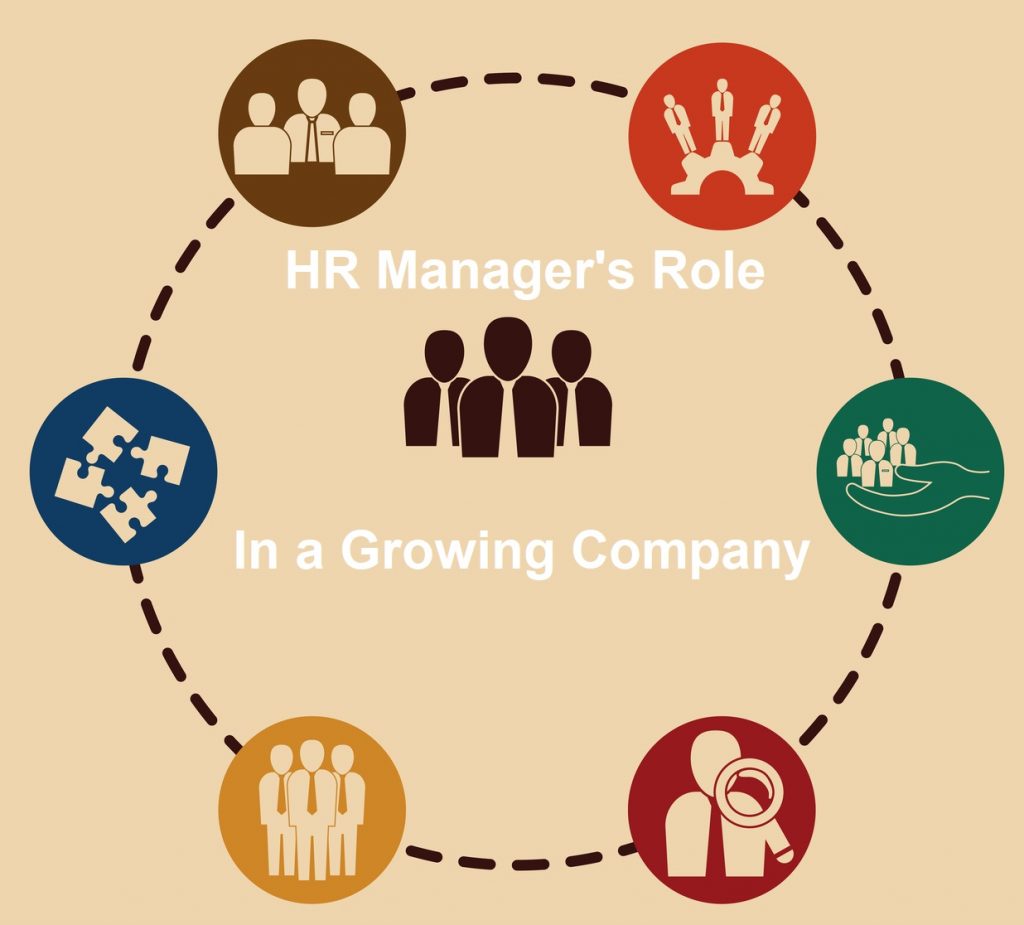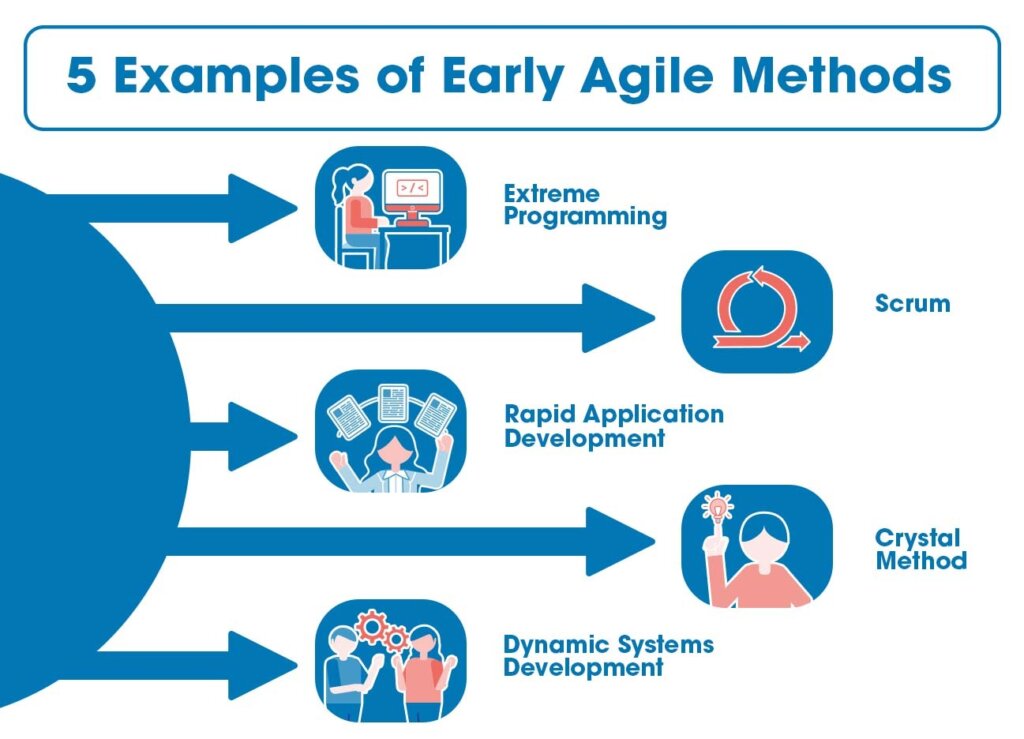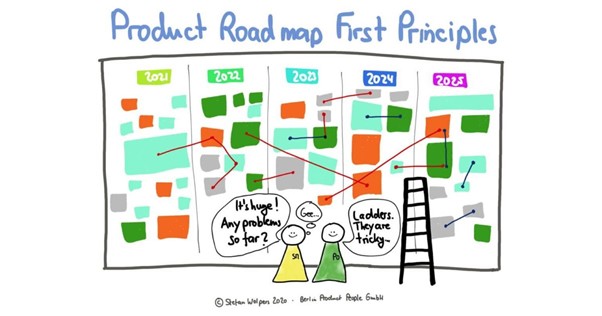The Crucial Role of R&D in SaaS Success
Research and development (R&D) is the lifeblood of any successful SaaS startup. It’s the driving force behind innovation, competitiveness, and revenue growth. Effective R&D management can make or break a SaaS company, as it directly impacts the quality and relevance of the products or services offered. In today’s fast-paced and ever-evolving tech landscape, SaaS startups must prioritize R&D to stay ahead of the curve and meet the changing needs of their customers.
A well-executed R&D strategy enables SaaS startups to develop cutting-edge solutions that address real-world problems, thereby increasing customer satisfaction and loyalty. Moreover, R&D investments can lead to significant revenue growth, as innovative products and services can attract new customers and create new market opportunities. According to a study by the National Science Foundation, companies that invest heavily in R&D tend to experience higher revenue growth rates than those that do not.
However, effective R&D management is not without its challenges. SaaS startups often face limited resources, tight deadlines, and intense competition, making it difficult to allocate sufficient time and budget to R&D initiatives. Moreover, the rapidly changing technology landscape requires SaaS startups to be agile and adaptable, quickly responding to emerging trends and customer needs.
Despite these challenges, SaaS startups that prioritize R&D management can reap significant rewards. By fostering a culture of innovation, encouraging experimentation, and leveraging the latest technologies and tools, SaaS startups can develop innovative solutions that drive business growth and success. In the next section, we’ll explore the key elements of building a high-performing R&D team, including tips on recruiting top talent, fostering a culture of innovation, and establishing clear roles and responsibilities.
How to Build a High-Performing R&D Team
Assembling a skilled R&D team is crucial for the success of any SaaS startup. A high-performing team can drive innovation, improve product quality, and increase customer satisfaction. However, building such a team requires careful planning, strategic recruitment, and effective management. In this section, we’ll provide guidance on how to build a high-performing R&D team, including tips on recruiting top talent, fostering a culture of innovation, and establishing clear roles and responsibilities.
Recruiting top talent is essential for building a high-performing R&D team. SaaS startups should look for individuals with a strong passion for innovation, a willingness to take risks, and a proven track record of delivering high-quality products. To attract top talent, SaaS startups should offer competitive salaries, benefits, and opportunities for growth and development. Additionally, they should foster a culture of innovation, encouraging experimentation, learning from failure, and recognizing and rewarding outstanding performance.
Establishing clear roles and responsibilities is also critical for building a high-performing R&D team. SaaS startups should define clear job descriptions, expectations, and goals for each team member. This will help ensure that everyone is working towards the same objectives and that there is no duplication of effort. Furthermore, SaaS startups should encourage open communication, collaboration, and feedback among team members to ensure that everyone is aligned and working together effectively.
In addition to recruiting top talent and establishing clear roles and responsibilities, SaaS startups should also prioritize diversity and inclusion in their R&D teams. A diverse team with different perspectives, experiences, and skills can drive innovation, improve product quality, and increase customer satisfaction. SaaS startups should strive to create a culture of inclusion, where everyone feels valued, respected, and empowered to contribute.
Effective R&D management is also critical for building a high-performing R&D team. SaaS startups should establish clear processes and procedures for managing R&D projects, including project planning, execution, and monitoring. They should also prioritize continuous learning and improvement, encouraging team members to share knowledge, best practices, and lessons learned. By doing so, SaaS startups can ensure that their R&D teams are always improving, innovating, and delivering high-quality products that meet customer needs.
Agile Methodologies for SaaS R&D: A Deep Dive
Agile development methodologies have become increasingly popular in SaaS R&D, and for good reason. Agile approaches such as Scrum and Kanban offer a flexible and iterative approach to software development, allowing teams to respond quickly to changing customer needs and market conditions. In this section, we’ll delve into the world of Agile development, exploring its benefits and challenges in the context of SaaS R&D.
Scrum is one of the most widely used Agile frameworks in SaaS R&D. It emphasizes teamwork, accountability, and iterative progress toward well-defined goals. Scrum teams work in sprints, typically lasting two to four weeks, during which they focus on specific tasks and deliverables. At the end of each sprint, the team reviews its progress, identifies areas for improvement, and plans the next sprint.
Kanban is another popular Agile framework used in SaaS R&D. It emphasizes continuous flow and delivery, rather than iterative progress. Kanban teams visualize their workflow, identifying bottlenecks and areas for improvement. They then work to optimize the flow of work, delivering value to customers as quickly and efficiently as possible.
Both Scrum and Kanban offer numerous benefits for SaaS R&D teams. They promote flexibility, adaptability, and collaboration, allowing teams to respond quickly to changing customer needs and market conditions. They also emphasize continuous improvement, encouraging teams to reflect on their processes and identify areas for improvement.
However, Agile methodologies also present challenges for SaaS R&D teams. They require significant cultural and process changes, which can be difficult to implement and sustain. They also require teams to be highly disciplined and self-organizing, which can be challenging for teams with limited experience or resources.
To implement Agile methodologies effectively in SaaS R&D, teams should start by establishing clear goals and objectives. They should then identify the most suitable Agile framework for their needs, whether Scrum, Kanban, or a hybrid approach. Teams should also invest in training and coaching, ensuring that all team members understand the principles and practices of Agile development.
Finally, teams should be prepared to adapt and evolve their Agile approach over time. Agile is a journey, not a destination, and teams should be willing to experiment, learn, and improve continuously. By embracing Agile methodologies and adapting them to their unique needs and context, SaaS R&D teams can deliver high-quality products and services that meet the evolving needs of their customers.
Product Roadmapping: A Key to Successful R&D Management
Product roadmapping is a critical component of successful R&D management in SaaS startups. A well-crafted product roadmap aligns teams, prioritizes features, and ensures customer satisfaction. It provides a clear direction for the product, outlining the key milestones, timelines, and resources required to achieve business objectives.
A product roadmap should be a living document, regularly reviewed and updated to reflect changing customer needs, market conditions, and business priorities. It should be concise, clear, and easily accessible to all stakeholders, including developers, designers, product managers, and executives.
To create an effective product roadmap, SaaS startups should start by defining their business objectives and key performance indicators (KPIs). They should then identify the key features and functionalities required to achieve these objectives, prioritizing them based on customer needs, technical feasibility, and business impact.
Next, SaaS startups should establish a clear timeline for the product roadmap, outlining the key milestones, deadlines, and resources required to deliver each feature or functionality. They should also identify potential roadblocks and develop contingency plans to mitigate risks.
Product roadmapping is not a one-time activity, but rather an ongoing process that requires continuous monitoring and adjustment. SaaS startups should regularly review their product roadmap, gathering feedback from customers, stakeholders, and team members to ensure that it remains relevant and effective.
By investing time and effort into creating a well-crafted product roadmap, SaaS startups can ensure that their R&D efforts are aligned with business objectives, customer needs, and market conditions. This, in turn, can drive innovation, improve product quality, and increase customer satisfaction, ultimately leading to business success.
Some popular tools for creating and managing product roadmaps include ProductPlan, Roadmunk, and Aha!. These tools provide a range of features and functionalities, including roadmap visualization, prioritization, and collaboration, to help SaaS startups create and manage effective product roadmaps.
Leveraging Tools and Platforms for R&D Efficiency
In today’s fast-paced and competitive SaaS landscape, leveraging the right tools and platforms is crucial for R&D efficiency. The right tools can help streamline processes, improve collaboration, and increase productivity, ultimately leading to faster time-to-market and higher quality products.
Project management software is a critical tool for SaaS R&D teams. Tools like Jira, Asana, and Trello help teams plan, track, and manage projects, ensuring that everyone is on the same page and working towards the same goals. These tools also provide features like agile project planning, issue tracking, and reporting, making it easier to manage complex projects and teams.
Version control systems are another essential tool for SaaS R&D teams. Tools like GitHub, GitLab, and Bitbucket help teams manage code repositories, track changes, and collaborate on code development. These tools also provide features like code review, continuous integration, and continuous deployment, making it easier to manage code quality and ensure smooth deployments.
Collaboration platforms are also critical for SaaS R&D teams. Tools like Slack, Microsoft Teams, and Google Workspace help teams communicate, collaborate, and share information in real-time. These tools also provide features like video conferencing, screen sharing, and file sharing, making it easier to collaborate with remote teams and stakeholders.
In addition to these tools, SaaS R&D teams can also leverage other platforms and tools to improve efficiency. For example, tools like Zendesk and Freshdesk can help teams manage customer support and feedback, while tools like Mixpanel and Amplitude can help teams track user behavior and analytics.
When selecting tools and platforms for R&D efficiency, SaaS startups should consider several factors, including ease of use, scalability, and integration with existing tools and systems. They should also consider the total cost of ownership, including licensing fees, support costs, and training costs.
By leveraging the right tools and platforms, SaaS R&D teams can improve efficiency, productivity, and collaboration, ultimately leading to faster time-to-market and higher quality products. This, in turn, can drive business success and growth, helping SaaS startups stay competitive in today’s fast-paced and competitive landscape.
Measuring R&D Success: Key Performance Indicators (KPIs) and Metrics
Measuring the success of R&D efforts is crucial for SaaS startups to ensure that their investments are yielding the desired returns. By tracking relevant KPIs and metrics, SaaS startups can evaluate the effectiveness of their R&D management, identify areas for improvement, and make data-driven decisions to drive business growth.
One of the most important KPIs for SaaS R&D is cycle time, which measures the time it takes to complete a project or feature. By tracking cycle time, SaaS startups can identify bottlenecks in their development process and optimize their workflows to improve efficiency.
Lead time is another critical KPI for SaaS R&D, measuring the time it takes for a feature or project to go from concept to delivery. By tracking lead time, SaaS startups can evaluate the effectiveness of their development process and identify opportunities to improve speed and agility.
Customer satisfaction is also a key metric for SaaS R&D, measuring the level of satisfaction customers have with the products or services delivered. By tracking customer satisfaction, SaaS startups can evaluate the effectiveness of their R&D efforts and identify areas for improvement.
In addition to these KPIs, SaaS startups should also track other metrics such as return on investment (ROI), customer acquisition cost (CAC), and customer lifetime value (CLV). These metrics provide a comprehensive view of the effectiveness of R&D efforts and help SaaS startups make informed decisions about resource allocation and investment.
To establish a data-driven approach to R&D management, SaaS startups should implement a robust analytics and reporting framework. This framework should include tools and platforms for tracking KPIs and metrics, as well as processes for analyzing and interpreting data.
By leveraging data and analytics, SaaS startups can optimize their R&D efforts, improve efficiency, and drive business growth. This, in turn, can help SaaS startups stay competitive in today’s fast-paced and competitive landscape.
Some popular tools for tracking R&D KPIs and metrics include Google Analytics, Mixpanel, and Amplitude. These tools provide a range of features and functionalities, including data visualization, reporting, and analytics, to help SaaS startups track and measure their R&D efforts.
Overcoming Common R&D Challenges in SaaS Startups
SaaS startups often face unique Research and Development (R&D) challenges that can hinder their growth and innovation. Limited resources, tight deadlines, and changing customer needs are just a few of the common pain points that can impact R&D success. To overcome these challenges, SaaS startups must adopt effective R&D management strategies that prioritize agility, collaboration, and customer-centricity.
One of the primary challenges faced by SaaS startups is limited resources. With constrained budgets and small teams, it can be difficult to allocate sufficient resources to R&D initiatives. To overcome this challenge, SaaS startups can adopt a lean R&D approach that focuses on iterative development, continuous testing, and customer feedback. This approach enables teams to deliver high-quality products with minimal resources.
Tight deadlines are another common challenge faced by SaaS startups. With rapid market changes and evolving customer needs, SaaS startups must be able to respond quickly to stay competitive. To overcome this challenge, SaaS startups can adopt Agile methodologies that prioritize flexibility, adaptability, and rapid iteration. Agile frameworks like Scrum and Kanban enable teams to respond quickly to changing requirements and deliver high-quality products on time.
Changing customer needs are also a significant challenge for SaaS startups. With rapidly evolving market trends and customer preferences, SaaS startups must be able to adapt quickly to stay relevant. To overcome this challenge, SaaS startups can adopt a customer-centric approach to R&D that prioritizes customer feedback, testing, and validation. This approach enables teams to deliver products that meet customer needs and stay ahead of the competition.
In addition to these challenges, SaaS startups must also contend with the complexities of R&D management. With multiple stakeholders, competing priorities, and limited resources, R&D management can be a daunting task. To overcome this challenge, SaaS startups can adopt R&D management tools and platforms that enable collaboration, prioritization, and tracking. Tools like Jira, GitHub, and Slack enable teams to work together effectively, prioritize tasks, and track progress.
Effective R&D management is critical to the success of SaaS startups. By adopting lean R&D approaches, Agile methodologies, customer-centric strategies, and R&D management tools, SaaS startups can overcome common R&D challenges and deliver high-quality products that meet customer needs. With the right R&D management strategies in place, SaaS startups can drive innovation, growth, and competitiveness in the market.
By prioritizing R&D management, SaaS startups can ensure that their products stay ahead of the competition, meet customer needs, and drive business growth. With the right strategies and tools in place, SaaS startups can overcome common R&D challenges and achieve success in the market. Effective R&D management is essential for SaaS startup R&D management, and by adopting the right approaches, SaaS startups can drive innovation, growth, and competitiveness.
Scaling R&D Operations for Growth and Expansion
As a SaaS startup grows, its Research and Development (R&D) operations must also scale to meet increasing demands. Scaling R&D operations requires careful planning, process optimization, team expansion, and technology adoption. Effective scaling ensures that the startup maintains its innovative edge, agility, and competitiveness in the market.
Process optimization is critical when scaling R&D operations. As the team grows, processes can become cumbersome and inefficient. To address this, SaaS startups can implement lean R&D methodologies that eliminate waste, streamline workflows, and enhance collaboration. This enables teams to focus on high-value tasks, reduce cycle times, and improve overall productivity.
Team expansion is another essential aspect of scaling R&D operations. As the startup grows, it must attract and retain top talent to drive innovation and growth. To achieve this, SaaS startups can develop a strong employer brand, offer competitive compensation and benefits, and provide opportunities for career growth and development. This enables teams to attract and retain the best talent, ensuring that the startup maintains its competitive edge.
Technology adoption is also crucial when scaling R&D operations. As the team grows, it must adopt tools and platforms that enhance collaboration, productivity, and innovation. SaaS startups can leverage cloud-based platforms, such as AWS or Google Cloud, to scale their infrastructure and support growing workloads. They can also adopt project management tools, such as Jira or Asana, to streamline workflows and enhance collaboration.
When scaling R&D operations, it’s essential to maintain innovation and agility. SaaS startups can achieve this by adopting a culture of continuous learning and improvement. This involves providing training and development opportunities, encouraging experimentation and risk-taking, and recognizing and rewarding innovation. By maintaining a culture of innovation, SaaS startups can ensure that their R&D operations remain agile and responsive to changing market demands.
Effective SaaS startup R&D management is critical to scaling R&D operations. By adopting lean methodologies, optimizing processes, expanding teams, adopting technology, and maintaining innovation, SaaS startups can ensure that their R&D operations scale efficiently and effectively. This enables them to drive growth, innovation, and competitiveness in the market, ultimately achieving long-term success.
Scaling R&D operations requires careful planning, execution, and management. By following best practices and adopting innovative approaches, SaaS startups can ensure that their R&D operations scale efficiently and effectively, driving growth, innovation, and competitiveness in the market. Effective R&D management is essential to achieving long-term success in the SaaS industry.
In conclusion, scaling R&D operations is a critical aspect of SaaS startup growth and expansion. By adopting lean methodologies, optimizing processes, expanding teams, adopting technology, and maintaining innovation, SaaS startups can ensure that their R&D operations scale efficiently and effectively. Effective SaaS startup R&D management is essential to achieving long-term success in the market.







